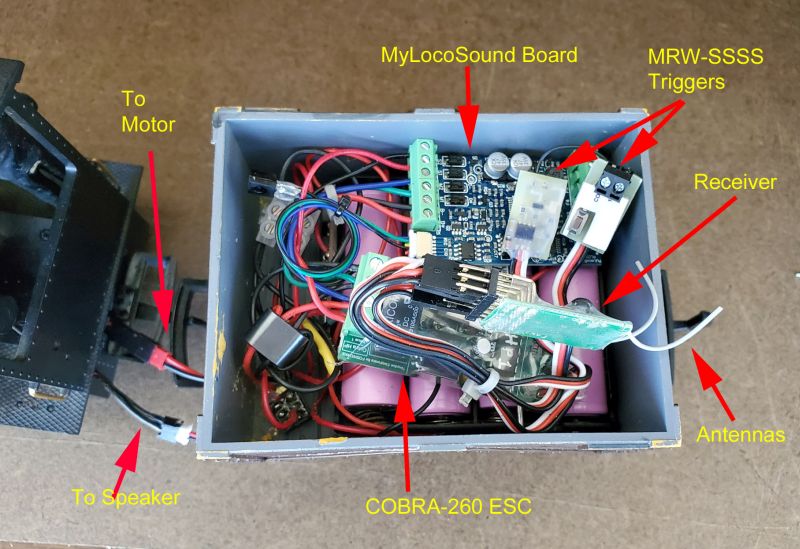I picked up one of those tiny LGB 20140 in a weak moment, and decided to make it run. As most of my friends do not use track power, this means battery operation, and it didn’t seem likely that I could get enough cells, plus the RX and sound card into that boiler. I have a string of gondolas which would look good behind it, so I got out my spare LiIon 18650 battery box and it seems to fit.
The only mods to the engine are to fit a track/battery DPDT switch with a cable to the trailing car, and a speaker inside the loco somewhere.
This is the underside of the frame removed from the bodywork, and those 4 connectors on the front seem to be the track pickups (outer pair) and the motor leads (inner.) The pcb has a couple of chokes on the other side. There’s room above it to add the DPDT slider switch and I am debating whether it is worth making it accessible through the front pilot beam, or just leave it as it is very easy to reach by removing 4 screws. How often do you switch from track to battery anyway?
I poked around and found the coal box on the side of the cab is removed with one screw and the little 8 ohm speaker I got from Radio Shack looks like it will fit.
Not sure what it will sound like, but there ain’t room for a 2" speaker. With a slot in the side and holes in the bottom for the wires it is ready to fit. And here it is tucked in the corner of the cab.
Next job is to fit the switch at the front and run the wires.






















